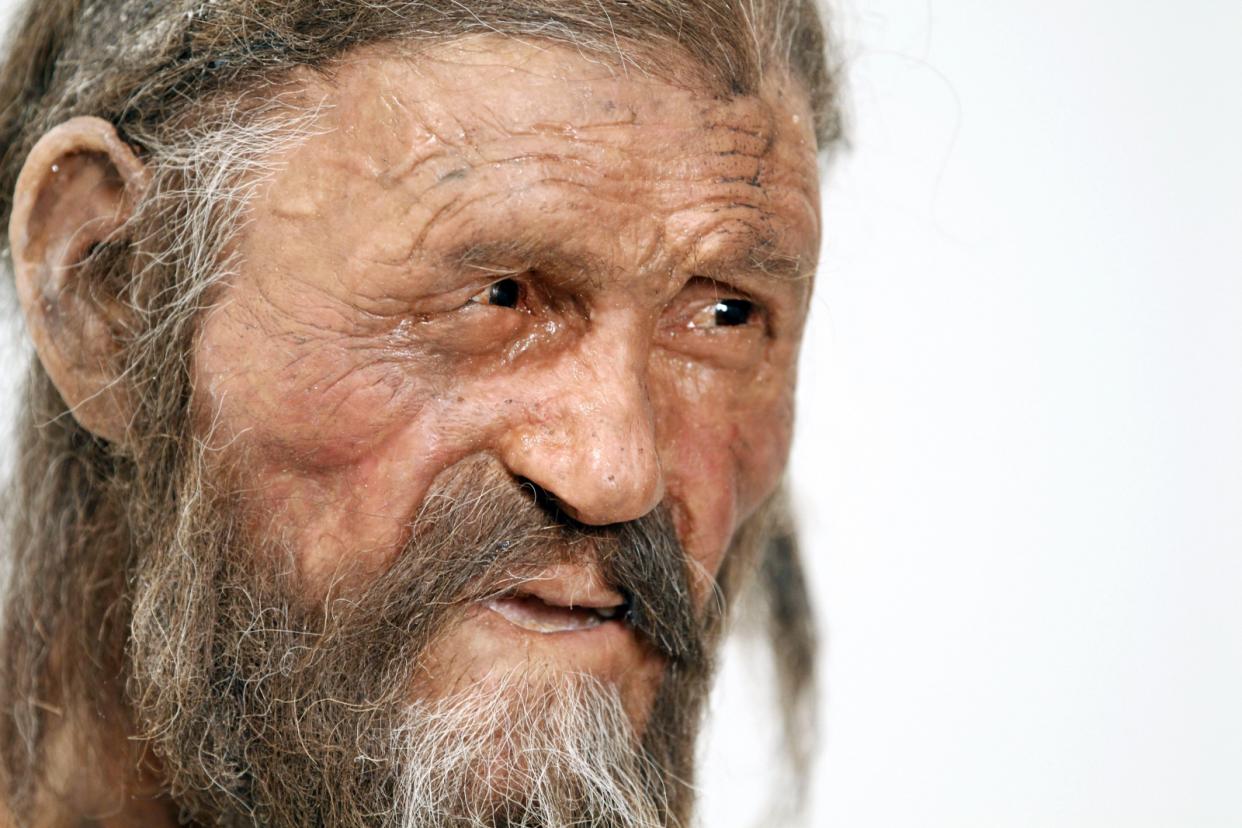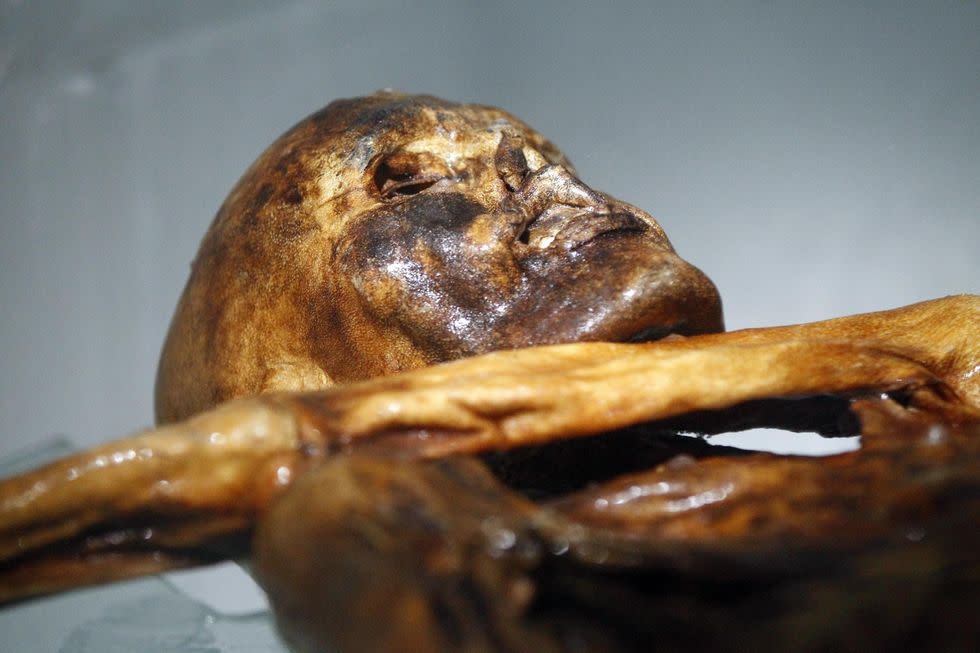The real Paleo diet: Scientists reveal Otzi the Iceman’s last meal

Scientists have worked out the final meal of a 5,300-year-old ice mummy known fondly as ‘Otzi the Iceman’ – and it was a surprisingly balanced, high-fat feast.
Otzi had dined on a ‘remarkably high-fat diet’ consisting of wild meat from ibex and red deer, as well as cereals, scientists found after analysing his stomach contents.
There were also traces of toxic bracken – a sort of large fern – that he may have taken as a medicine.
Otzi was shot with an arrow five thousand years ago and his body was preserved by cold temperatures.
Otzi’s frozen corpse was discovered by German tourists in the Eastern Italian Alps in 1991.

The findings, published in the journal Current Biology, offer important insights into the nutritional habits of Europeans, going back more than 5,000 years to the Copper Age.
They also offer clues as to how our ancient ancestors handled food preparation.
Doctor Frank Maixner, of the Eurac Research Institute for Mummy Studies in Italy, said: ‘We reconstructed the Iceman’s last meal, showing that he has had a remarkably high proportion of fat in his diet, supplemented with wild meat from ibex and red deer, cereals from einkorn, and with traces of toxic bracken.’
MOST POPULAR TODAY ON YAHOO
BBC pay: List of highest paid stars reveals men still receive more than women
Little-known STI that can leave women infertile ‘could become a superbug within 10 years’
‘The stomach material was, compared to previously analysed lower intestine samples, extraordinarily well preserved, and it also contained large amounts of unique biomolecules such as lipids, which opened new methodological opportunities to address our questions about Otzi’s diet.’
Dr Maixner explained that the analysis hadn’t happened earlier because scientists were initially unable to identify the Iceman’s stomach because it had moved up during the mummification process.
In 2009, his stomach was spotted during a re-investigation of CT scans, and an effort to analyse its contents was launched.


